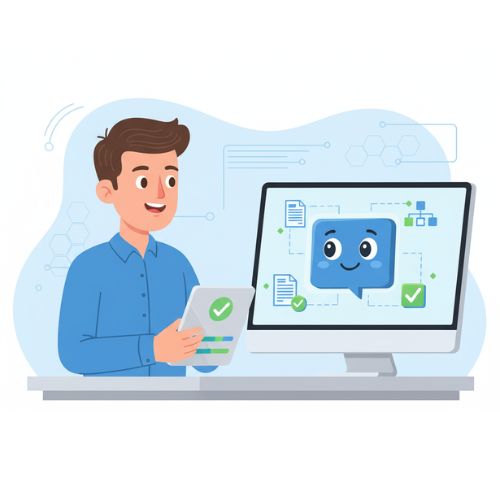A Deep Dive Into ISO 13485 Audits
Audits are an important part of any quality management system (QMS), and medical device manufacturers are no exception. In order to ensure that their products meet all the necessary requirements, they need to undergo regular audits by both internal and external bodies.
One of the most important standards for medical device manufacturers is ISO 13485. This standard provides guidance on the design, development, production, installation and servicing of medical devices. It covers all aspects of the manufacturing process, from raw material selection to final product release.
In order to comply with ISO 13485, medical device manufacturers need to have a robust quality management system (QMS) in place. This system should cover all aspects of the manufacturing process, from design and development through to production and post-market surveillance.
Medical device manufacturers need to be prepared for audits at all times. By being prepared for audits, medical device manufacturers can ensure that their quality management system (QMS) is up to scratch and that their products meet all the necessary requirements.
The basics of an ISO 13485 audit - what to expect and how to prepare.
One of the most important aspects of your quality management system (QMS) is the audit process. Audits help to identify any areas where your system needs to be improved. They can be conducted by both internal and external bodies, and they are an essential part of ensuring compliance with ISO 13485.
When you are preparing for an ISO 13485 audit, there are a few things you can do to make sure that everything goes smoothly. These include:
- Reviewing your documentation: The first step is to review all of your quality management system (QMS) documentation. This includes everything from your quality policy through to your procedures and work instructions. You need to make sure that all of your documentation is up to date and compliant with the standard.
- Training your staff: The second step is to train your staff in the use of your quality management system (QMS). This includes everyone from senior management through to assembly line workers. You need to make sure that all of your staff are properly trained in the use of your system and that they understand their roles and responsibilities.
- Evaluating your suppliers: The third step is to evaluate your suppliers. You need to make sure that they are capable of supplying products that meet your quality requirements. This includes assessing their manufacturing processes and quality control procedures.
- Checking your product design: The fourth step is to check your product design against the requirements of the standard. This includes taking into account factors such as user safety and biocompatibility.
- Doing a mock audit: The fifth step is to do a mock audit of your quality management system (QMS). This will help you to identify any areas where you need to make improvements.
Common nonconformities found in ISO 13485 audits
There are a number of common nonconformities that are often found in ISO 13485 audits. These include:
- Lack of documentation: This is one of the most common problems found in ISO 13485 audits. In order to comply with the standard, you need to have a complete set of documentation for your quality management system (QMS). This should include everything from your quality policy through to your procedures and work instructions.
- Poorly trained staff: Another common problem is poorly trained staff. In order to comply with ISO 13485, you need to make sure that all of your staff are properly trained in the use of your quality management system (QMS). This includes everyone from senior management through to assembly line workers.
- Lack of control over outsourced processes: If you outsource any part of your manufacturing process, you need to have a clear understanding of how these processes are controlled This means having documented procedures in place that cover all aspects of the outsourcing process.
- Poorly products: In order to comply with ISO 13485, you need to design your products in accordance with the standard. This includes taking into account factors such as user safety and biocompatibility.
- Non-conforming product: Finally, one of the most common problems found in ISO 13485 audits is non-conforming product. This can be caused by a number of things, including poor quality control or incorrect assembly.
{{cta}}
Corrective and preventive actions (CAPA) in the context of ISO 13485
If any problems are found during an audit, you will need to put corrective and preventive actions (CAPA) in place in order to address them. CAPA is a process for identifying and addressing problems in your quality management system (QMS). It involves four main steps:
- Identification of the problem: The first step is to identify the problem. This can be done through auditing, customer feedback, or other means.
- Investigation of the problem: Once the problem has been identified, you need to investigate it in order to determine the root cause.
- Implementation of corrective action: Once the root cause has been determined, you need to put corrective action in place in order to fix the problem.
- Implementation of preventive action: In order to prevent the problem from happening again, you need to put preventive action in place. This might involve changes to your quality management system (QMS) or changes to the way you design and manufacture your products.
By following these steps, you can ensure that any problems found during an audit are properly addressed and that your quality management system (QMS) is improved as a result.
Tips for a successful ISO 13485 audit.
There are a few steps you can take to ensure a successful audit:
- Make sure your documentation is up to date and compliant with the standard.
- Train your staff in the use of your quality management system (QMS).
- Evaluate your suppliers to make sure they are capable of supplying products that meet your quality requirements.
- Check your product design against the requirements of the standard.
- Do a mock audit of your quality management system (QMS). This will help you to identify any areas where you need to make improvements.
By being prepared, you can ensure that your quality management system (QMS) is up to scratch and that your products meet all the necessary requirements.
Answers your employees need, right when they need them
Meet Botable — the AI chatbot that handles everything from simple FAQs to complex, multi-step questions, so your team can focus on what matters. Built for HR, QA, and beyond.
Continue reading
Ready to see what Botable can do for you?
Book your demo now to see how Botable can transform your workplace.
Identify your unique challenges
Flexible pricing options
Easy integrations
Step-by-step implementation plan
Customize Botable for your workflow
Book a demo
.webp)



